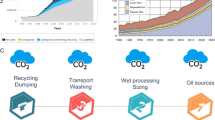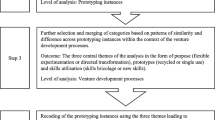Abstract
Both developmental and diffusionist models for the growth and spread of iron technology in Africa are characterized by a surprising absence of scientific understanding of how that technology developed. Heretofore there has been no basis for an assessment of the cultural and ecological factors that led to technical innovation in Iron Age Africa, for archaeological studies rarely go beyond descriptions of isolated smelting furnaces. Given the complex interaction of human labor, specialized cultural and technological knowledge, raw materials, and thermodynamics involved in smelting, it is not surprising that archaeologists have been slow to develop regional perspectives on iron technology. This paper provides a number of ways to redress past neglect by the study of iron production and innovation in an African region over which there is close chronological control. The new perspectives stress important indigenous innovations, analytical approaches applied to artifacts and structures, experiments on materials, and ethnoarchaeological observations. These are applicable throughout Africa and provide a foundation for understanding African technological innovation and the development and impact of a significant technology on Early Iron Age peoples.
Résumé
Les modèles concernant le développement et l'extension de la technologie du fer en Afrique—que ce soit le modèle évolutionniste ou le modèle diffusionniste—se caractérisent tous les deux par un manque surprenant de compréhension de la manière dont cette technologie a évolué. Il n'y a jusqu'à présent, pas de base pour établir les facteurs culturels et écologiques qui ont mené aux inventions technologiques durant l'Age du Fer en Afrique, puisque les études archéologiques sont limitées à la description de fourneaux de fonte isolés. Etant donné le rapport complexe entre le travail humain, le savoir technique et culturel, les matières premières et la thermodynamique de la fonte du fer, il n'est pas étonnant que les archéologues n'aient développé que très lentement des perspectives régionales sur la technologie du fer. Ce rapport remédie à cette lacune antérieure en offrant une étude approfondie—avec une chronologie contrôlée—sur la production du fer et les innovations concernant cette production, dans une région de l'Afrique. Ces nouvelles perspectives mettent en évidence d'importantes innovations indigènes—donc africaines-ainsi que de nouvelles méthodes analytiques concernant les objets et les structures, des expérimentations sur le matériel trouvé, et des observations ethnoarchéologiques. Ces données sont valables pour toute l'Afrique et nous offrent une base pour la compréhension de l'innovation technologique en Afrique, de son développement et des répercussions que cette technologie importante a eues sur les populations de l'Age du Fer Ancien.
Similar content being viewed by others
References
Arkell, A. 1961. The valley of the Nile. InThe dawn of African history (ed. R. Oliver) pp. 7–21. London: Oxford University Press.
Avery, D. and Schmidt, P. 1979. A metallurgical study of the iron bloomery, particularly as practiced in Buhaya.Journal of Metals 31(9):14–20.
Calvocoressi, D. and David, N. 1979. A new survey of radiocarbon and thermoluminescence dates for West Africa.Journal of African History 20(1):1–29.
Childs, S. T. 1984. Clays to artifacts: resource selection in African Early Iron Age iron making technologies. Paper read at the 83rd Annual Meeting of the American Anthropological Association (Denver).
Childs, S. T. n.d.Early Iron Age ceramic technology in East Africa. Ph.D. Thesis, Department of Anthropology, Boston University.
Childs, S. T. and Schmidt, P. in press. Experimental iron smelting: the genesis of a hypothesis with implications for African prehistory. InAfrican iron working, ancient and traditional (eds P. Shinnie and R. Haaland). Bergen: University of Bergen Press.
Cline, W. 1937.Mining and metallurgy in Negro Africa. Menasha, WI: George Banta Publishing Company.
Grébenart, D. 1983. Les métallurgies de cuivre et du fer autour d'Agadez (Niger), des origines au début de la période médiévale. Vues générales. InMetallurgies africaines: nouvelles contributions (ed. N. Echard): pp. 109–25. Mémoire de la Société des Africanistes 9.
Hiernaux, J. and Maquet, E. 1957. Cultures préhistoriques de l'âge des métaux au Ruanda-Urundi.Bulletin de l'Académie Royale des Sciences Coloniales n.s.II(6):1126–49.
Hiernaux, J. and Maquet, E. 1960. Cultures préhistoriques de l'âge des métaux au Ruanda-Urundi et au Kivu (Congo belge).Mémoire de l'Académie Royale des Sciences d'Outre-Mer, Classe des Sciences naturelles et médicales n.s.X(2):5–102.
Kendall, R. L. 1969. An ecological history of the Lake Victoria basin.Ecological Monographs 39:121–76.
Klein, J. J., Lerman, C., Damon, P. E. and Ralph, E. K. 1982. Calibration of radiocarbon dates: tables based on the consensus data of the Workshop on Calibrating the Radiocarbon Time Scale.Radiocarbon 24(2):103–50.
Long, A. and Rippeteau, B. 1974. Testing contemporaneity and averaging radiocarbon dates.American Antiquity 39(1):205–15.
Mauny, R. 1961. Tableau géographique de l'Ouest Africain au Moyen Age, d'après les sources écrites, la tradition et l'archéologie.Mémoires de l'IFAN 61. Dakar: IFAN.
Oliver, R. and Fage, J. D. 1962.A short history of Africa. Baltimore: Penguin Books.
Phillipson, D. W. 1985.African archaeology. New York: Cambridge University Press.
Schmidt, P. R. 1975. A new look at interpretations of the early Iron Age in East Africa.History in Africa 2:127–36.
Schmidt, P. R. 1978.Historical archaeology: a structural approach in an African culture. Westport, CT: Greenwood Press.
Schmidt, P. R. 1980a. Steel production in prehistoric Africa: insights from ethnoarchaeology in West Lake, Tanzania. InProceedings, VIIIth Panafrican Congress of Prehistory and Quarternary Studies (eds R. E. Leakey and B. A. Ogot): pp. 335–40. Nairobi: TILLMIAP.
Schmidt, P. R. 1980b. Early Iron Age settlements and industrial locales in West Lake.Tanzania Notes and Records 84–85:335–40.
Schmidt, P. R. 1981.The origins of iron smelting in Africa: a complex technology in Tanzania. Research Papers in Anthropology No. 1. Department of Anthropology, Brown University.
Schmidt, P. R. 1983a. Further evidence for an advanced prehistoric iron technology in Africa.Journal of Field Archaeology 10:421–34.
Schmidt, P. R. 1983b. Cultural meaning and history in African myth.International Journal of Oral History 4(3):165–83.
Schmidt, P. R. in press. The Barongo iron smelters of Biharamulo.Tanzania Notes and Records.
Schmidt, P. R. and Avery, D. H. 1978. Complex iron smelting and prehistoric culture in Tanzania.Science 201:1085–89.
Shaw, T. 1969. Archaeology in Nigeria.Antiquity 23:187–99.
Soper, R. C. 1982. Bantu expansion into Eastern Africa: linguistic evidence. InThe archaeological and linguistic reconstruction of African history (eds C. Ehret and M. Posnansky 49): pp. 223–38. Berkeley: University of California Press.
Stuiver, M. 1982. A high-precision calibration of the AD radiocarbon time scale.Radiocarbon 24(1):1–26.
Tylecote, R. F. 1970. Iron working at Meroë, Sudan.Bulletin of the Historical Metallurgy Group 4(2):67–72.
Tylecote, R. F. 1975a. The origin of iron smelting in Africa.West African Journal of Archaeology 5:1–9.
Tylecote, R. F. 1975b. Iron smelting at Taruga, Nigeria.Journal of the Historical Metallurgical Society 9:49–56.
Van der Merwe, N. J. 1980. The advent of iron in Africa. InThe coming of the age of iron (eds T. Wertime and J. Muhly): pp. 463–506. New Haven: Yale University Press.
Van der Merwe, N. J. and Avery, D. H. 1982. Pathways to steel.American Scientist 70:146–55.
Van Grunderbeek, M.-C., Roche, E. and Doutrelepont, H. 1983a.Le premier Age du Fer au Rwanda et au Burundi: archéologie et environment. Brussels: IFAQ.
Van Grunderbeek, M.-C., Roche, E. and Doutrelepont, H. 1983b. Métallurgie ancienne au Rwanda et au Burundi.Journées de Paléométallurgie, Actes du Colloque de Compiègne (22–23 février 1983): pp. 407–23.
Van Noten, F. 1979. The early Iron Age in the Interlacustrine Region: the diffusion of iron technology.Azania 14:61–80.
Willett, F. 1971. A survey of recent results in the radiocarbon chronology of western and northern Africa.Journal of African History 113:339–70.
Rights and permissions
About this article
Cite this article
Schmidt, P.R., Childs, S.T. Innovation and industry during the Early Iron Age in East Africa: the KM2 and KM3 sites of northwest Tanzania. Afr Archaeol Rev 3, 53–94 (1985). https://doi.org/10.1007/BF01117455
Issue Date:
DOI: https://doi.org/10.1007/BF01117455




